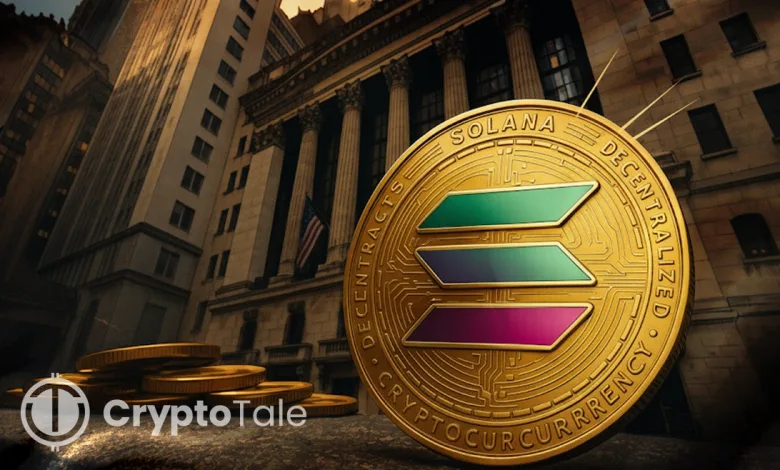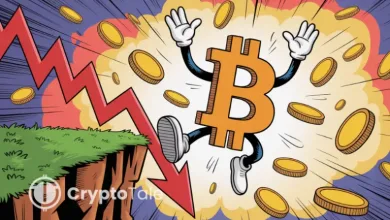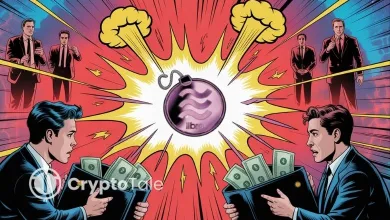From Technical Milestones to Institutional Adoption: Solana’s September Recap

- Solana spiked to $250 mid-September, then fell below $200 amid ETP and DAT optimism.
- Forward and Helius treasuries amplify Solana’s institutional presence across markets.
- The Alpenglow upgrade accelerates Solana’s performance and enhances network precision.
Solana closed September 2025 below its one-year SOL/ETH trendline, even after a modest 2% monthly gain. Data from Artemis XYZ (as of Sept. 29, 2025) showed that SOL briefly surpassed $250 mid-month before retreating below $200 within a week. This marked a volatile yet pivotal period shaped by optimism over a potential Solana Exchange-Traded Product (ETP) and the rapid expansion of digital asset treasuries (DATs).
Two major Digital Asset Trusts (DATs), Forward and Helius, began operations in September, signaling institutional confidence in Solana-based asset management. Such actions reinforced the growing financial infrastructure of the network and heralded the growth of institutional activity within the Solana ecosystem.
Meanwhile, VanEck recap September announced that Solana received 2B of new stablecoins, which guarantees it 60 percent of the tokenized share of the stock market. Other upgrades noted in the recap include Alpenglow and Firedancer, which aim to enhance the performance of the validator and improve the throughput and scalability of the Solana network.
Technical Improvements: Revamp the Solana Consensus Layer.
From a technical perspective, September marked a milestone month for Solana. VanEck confirmed that validators approved the Alpenglow upgrade by a 98% margin. The update is regarded as one of Solana’s most extensive consensus changes since inception, as it modifies several core features within its blockchain architecture.
The upgrade also introduced shorter finality times, decreasing the confirmation time from 12 seconds to 150 milliseconds, and enabled off-chain voting on a block. It also enhanced the economics of validators and eased the node communication. These changes have increased the stability and efficiency of consensus in terms of resource allocation across the network.
After the upgrade, developers suggested increasing block capacity so as to enhance transaction throughput. Solana calculates the number of transactions processed in compute units, which are measured in terms of computational power per block. There is a limit to the number of compute units per block that essentially limits throughput.
In this regard, Solana developers are working to grow block capacity by 25 percent by the end of the year. In the meantime, the Firedancer team of Jump Crypto had suggested SIMD-0370, making the fixed limit to the number of compute units completely optional. This proposal would be highly scalable, supporting a larger number of transactions without compromising network performance, should it be implemented.
Related: Solana Targets RWA Leadership as The Token’s Price Holds $231
Developer Growth and Institutional Adoption Strengthen Ecosystem
In addition to technical development, Solana has been growing its developer base and institutional access. The blockchain overtook Ethereum in terms of developers, with more than 7,600 new builders registered in 2024, according to Helius. It has more successful transactions per day on its network than any other blockchain.
REV, or Real Economic Value, is defined as combining revenue from fees, tips, and warnings derived from MEV, driving vigorous organic activity and subsequent price restoration in the market. Solana is also at the top in DEX trading, accounting for over 80% of total blockchain DEX volume, which is a sign of deep ecosystem utility beyond mere speculative trading.
Institutional adoption was also blossoming during this period. The Solana stablecoin supply, on the other hand, ballooned from $1.5 billion to $11.7 billion, as financial firms became interested in issuing tokenized assets and funds on its network. Asset managers and digital-asset treasuries are now rewarding Solana balance sheets, thus indicating acceptance into mainstream finance.
Therein are challenges. Upgrades of a certain stature, such as Alpenglow and Firedancer, carry coordination risks—with their potential to introduce sneaky old bugs, new ones, or simply secondary disruptions in the near term.
Market sentiment, therefore, stands the threat of withering if these attempts should fail. On the other hand, a fully operational and detailed Alpenglow, coupled with block expansion and the P-token model, may set a new efficiency standard for any blockchain.





